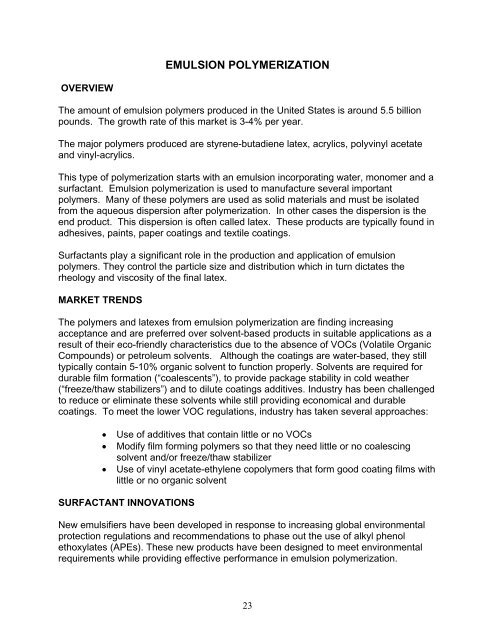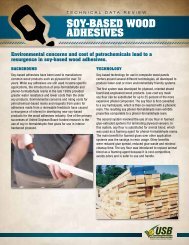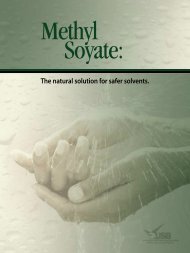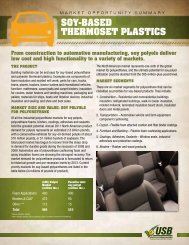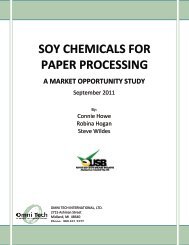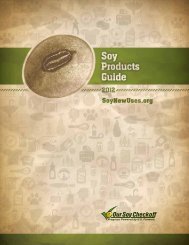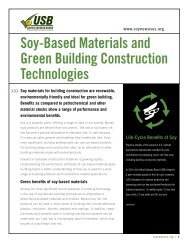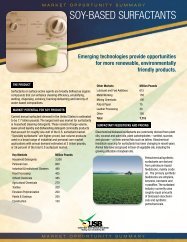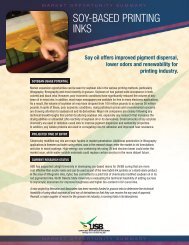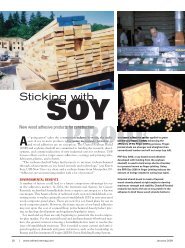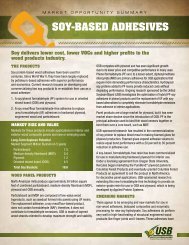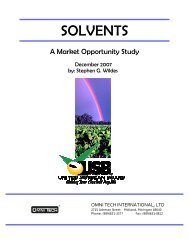Surfactants Market Opportunity Study - January 2009 - Soy New Uses
Surfactants Market Opportunity Study - January 2009 - Soy New Uses
Surfactants Market Opportunity Study - January 2009 - Soy New Uses
You also want an ePaper? Increase the reach of your titles
YUMPU automatically turns print PDFs into web optimized ePapers that Google loves.
EMULSION POLYMERIZATION<br />
OVERVIEW<br />
The amount of emulsion polymers produced in the United States is around 5.5 billion<br />
pounds. The growth rate of this market is 3-4% per year.<br />
The major polymers produced are styrene-butadiene latex, acrylics, polyvinyl acetate<br />
and vinyl-acrylics.<br />
This type of polymerization starts with an emulsion incorporating water, monomer and a<br />
surfactant. Emulsion polymerization is used to manufacture several important<br />
polymers. Many of these polymers are used as solid materials and must be isolated<br />
from the aqueous dispersion after polymerization. In other cases the dispersion is the<br />
end product. This dispersion is often called latex. These products are typically found in<br />
adhesives, paints, paper coatings and textile coatings.<br />
<strong>Surfactants</strong> play a significant role in the production and application of emulsion<br />
polymers. They control the particle size and distribution which in turn dictates the<br />
rheology and viscosity of the final latex.<br />
MARKET TRENDS<br />
The polymers and latexes from emulsion polymerization are finding increasing<br />
acceptance and are preferred over solvent-based products in suitable applications as a<br />
result of their eco-friendly characteristics due to the absence of VOCs (Volatile Organic<br />
Compounds) or petroleum solvents. Although the coatings are water-based, they still<br />
typically contain 5-10% organic solvent to function properly. Solvents are required for<br />
durable film formation (“coalescents”), to provide package stability in cold weather<br />
(“freeze/thaw stabilizers”) and to dilute coatings additives. Industry has been challenged<br />
to reduce or eliminate these solvents while still providing economical and durable<br />
coatings. To meet the lower VOC regulations, industry has taken several approaches:<br />
• Use of additives that contain little or no VOCs<br />
• Modify film forming polymers so that they need little or no coalescing<br />
solvent and/or freeze/thaw stabilizer<br />
• Use of vinyl acetate-ethylene copolymers that form good coating films with<br />
little or no organic solvent<br />
SURFACTANT INNOVATIONS<br />
<strong>New</strong> emulsifiers have been developed in response to increasing global environmental<br />
protection regulations and recommendations to phase out the use of alkyl phenol<br />
ethoxylates (APEs). These new products have been designed to meet environmental<br />
requirements while providing effective performance in emulsion polymerization.<br />
23


